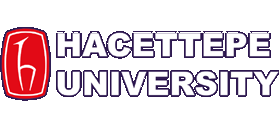ACADEMICS
Course Details
ELE612 - Advanced Solid State Electronics
2025-2026 Fall term information
The course is not open this term
ELE612 - Advanced Solid State Electronics
| Program | Theoretıcal hours | Practical hours | Local credit | ECTS credit |
| MS | 3 | 0 | 3 | 8 |
| Obligation | : | Elective |
| Prerequisite courses | : | - |
| Concurrent courses | : | - |
| Delivery modes | : | Face-to-face |
| Learning and teaching strategies | : | Lecture, Discussion, Question and Answer, Project Design/Management |
| Course objective | : | The aim of this course is to teach the design, fabrication and effective use of micro and nano scale solid state devices. |
| Learning outcomes | : | 1. Knows the materials used in electronics and optoelectronics effectively; 2. Have knowledge about quantum physics and its use in electronics; 3. Can design micro and nanoscale semiconductor devices; 4. Understand the operating mechanisms of different types of diodes and transistors and realize their effective use; 5. Have knowledge to understand and interpret the developments in micro and nanoelectronics industries |
| Course content | : | Materials in Electronics; Overview of Quantum Physics; pn and Metal-Semiconductor Junctions; Field Effect Transistors (FET) and Metal Oxide Semiconductor Field Effect Transistors (MOSFET); High Electron Mobility Transistors; High Frequency and High Power Transistors; Optoelectronic Devices |
| References | : | Streetman B.G. and Banerjee S.K., Solid State Electronics, 7th Ed., Pearson, 2016; Waser. R. Ed.,Nanoelectronics and Information Technology: Advanced Electronics Materials and Novel Devices, 3rd Ed., Wiley-VCH,2012; Sze S.M., Lee M.-K., Semiconductor Devices: Physics and Technology, 3rd Ed, Wiley, 2012 |
| Weeks | Topics |
|---|---|
| 1 | Introduction to Micro and Nano Scale Electronics Devices |
| 2 | Materials Science in Electronics |
| 3 | Semiconductor Manufacturing Technologies |
| 4 | Overview of Quantum Physics I: Principles of Probability and Uncertainty |
| 5 | Overview of Quantum Physics II: Energy Bands and Charge Carriers |
| 6 | P-N and Metal-Semiconductor Junctions |
| 7 | Schottky, Tunneling, Varactor and Power Diodes |
| 8 | FET, MESFET and MOSFET Transistors |
| 9 | Midterm |
| 10 | Advanced MOSFET Transistors and Integrated Circuit Applications |
| 11 | High Electron Mobility Transitors (HEMT) |
| 12 | Bipolar Junction (BJT) and Hetero-Bipolar Junction Transistor (HBT) |
| 13 | Carbon Nanotube and Graphene Based Electronic Devices |
| 14 | Optoelectronic Devices |
| 15 | Final Exam Preparation |
| 16 | Final Exam |
| Course activities | Number | Percentage |
|---|---|---|
| Attendance | 0 | 0 |
| Laboratory | 0 | 0 |
| Application | 0 | 0 |
| Field activities | 0 | 0 |
| Specific practical training | 0 | 0 |
| Assignments | 0 | 0 |
| Presentation | 0 | 0 |
| Project | 0 | 0 |
| Seminar | 0 | 0 |
| Quiz | 0 | 0 |
| Midterms | 1 | 40 |
| Final exam | 1 | 60 |
| Total | 100 | |
| Percentage of semester activities contributing grade success | 40 | |
| Percentage of final exam contributing grade success | 60 | |
| Total | 100 | |
| Course activities | Number | Duration (hours) | Total workload |
|---|---|---|---|
| Course Duration | 14 | 3 | 42 |
| Laboratory | 0 | 0 | 0 |
| Application | 0 | 0 | 0 |
| Specific practical training | 0 | 0 | 0 |
| Field activities | 0 | 0 | 0 |
| Study Hours Out of Class (Preliminary work, reinforcement, etc.) | 14 | 5 | 70 |
| Presentation / Seminar Preparation | 0 | 0 | 0 |
| Project | 0 | 0 | 0 |
| Homework assignment | 0 | 0 | 0 |
| Quiz | 0 | 0 | 0 |
| Midterms (Study duration) | 1 | 18 | 18 |
| Final Exam (Study duration) | 1 | 20 | 20 |
| Total workload | 30 | 46 | 150 |
| Key learning outcomes | Contribution level | |||||
|---|---|---|---|---|---|---|
| 1 | 2 | 3 | 4 | 5 | ||
| 1. | Has general and detailed knowledge in certain areas of Electrical and Electronics Engineering in addition to the required fundamental knowledge. | |||||
| 2. | Solves complex engineering problems which require high level of analysis and synthesis skills using theoretical and experimental knowledge in mathematics, sciences and Electrical and Electronics Engineering. | |||||
| 3. | Follows and interprets scientific literature and uses them efficiently for the solution of engineering problems. | |||||
| 4. | Designs and runs research projects, analyzes and interprets the results. | |||||
| 5. | Designs, plans, and manages high level research projects; leads multidiciplinary projects. | |||||
| 6. | Produces novel solutions for problems. | |||||
| 7. | Can analyze and interpret complex or missing data and use this skill in multidiciplinary projects. | |||||
| 8. | Follows technological developments, improves him/herself , easily adapts to new conditions. | |||||
| 9. | Is aware of ethical, social and environmental impacts of his/her work. | |||||
| 10. | Can present his/her ideas and works in written and oral form effectively; uses English effectively. | |||||
1: Lowest, 2: Low, 3: Average, 4: High, 5: Highest
